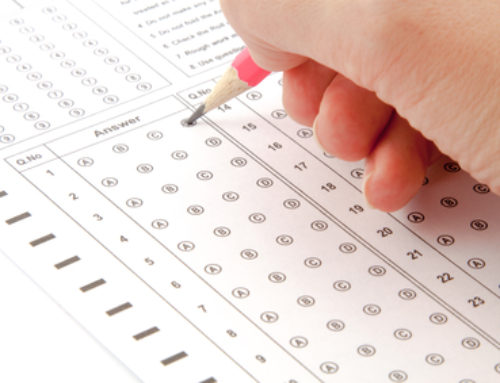No more answer sheets and #2 pencils. Starting in March 2024, students in the U.S. who take the SAT will take it digitally, and international students began taking the digital SAT in March 2023. Additionally, the PSAT will go digital in October of this year. In this blog post, I’ll explain what’s different about the digital SAT, what’s staying the same and what you need to know.
The maximum score for the SAT will remain 1600 and students will take the test at a school or test center. But, almost everything else will be different.
Students will take the digital SAT (dSAT) on a laptop or tablet. They may use their own or one provided by their school or test center. Students who don’t have access to a device can request one from the College Board at least 30 days prior to their test date. Additionally, students may use their own calculator or the calculator built into the student app. Calculators can be used on any math problem, which is not the case on the paper test.
Test fatigue should be less of an issue because the dSAT is an hour shorter than the paper test. The test has been pared down to two sections, rather than four. There are fewer questions overall and students will have more time to consider each question.
Math problems will be less wordy. There will be a greater emphasis on Geometry and Trigonometry, and student-produced response questions will count for 25% of the exam. The math section will progress from easier to harder questions.
The Reading & Writing section will see even more changes. Reading passages will be shorter and there will only be one question per passage. However, this means students will have to shift gears quickly, as the topics change from passage to passage. There will be some poetry and a greater emphasis on vocabulary in context.
The biggest overall change is that the dSAT will be adaptive, which means test takers will see different questions based on how they answer the initial set. Both the Reading & Writing and Math sections will be composed of two modules. If a student answers at least half of the questions in the first module correctly, they will face harder questions in the second module. If not, they will see easier questions in the second module. The College Board hasn’t officially commented, but test prep companies such as Applerouth, Arborbridge and Compass Prep believe students who receive the easier second module will earn scores between 200 and 590 per section, while those taking the harder module will earn scores between 440 and 800 per section.
Why some students may not like the digital SAT:
- Students with test anxiety, or those who start slowly, may struggle to get to the higher level module.
- Students won’t know if they got the easier or harder second module, and this may cause some students to worry rather than focus on the questions in front of them.
- Shorter reading passages can be deceptively hard, as there is less textual material to guide you to the right answer.
- Using the calculator for every question may not be necessary and may waste time.
Why some students may like the digital SAT:
- Students will have more time to answer each question.
- Students will need less test-taking stamina.
- A graphing calculator will be allowed on all math problems.
- Math problems will be more straightforward and less wordy.
- A tricky reading passage will have a smaller impact on your score.
- Students will get their scores in days rather than weeks.
Discovery College Consulting has always encouraged students to take a practice SAT (or PSAT) and a practice ACT, and that advice won’t change with the introduction of the digital SAT. According to Applerouth, “about a quarter of students score higher on one test relative to the other, but almost every student has a preference!” If you’d like to take a free practice dSAT, you can do so here.
Some students are wondering if they take a paper SAT before March 2024 and then take one or more digital SATs, will their scores be combined into one superscore? While the College Board has said it will superscore between the paper and digital tests, no colleges have publicly stated if they will accept such superscores, so stay tuned.
For more information about adaptive testing and the dSAT, check out this short video from Arborbridge.






